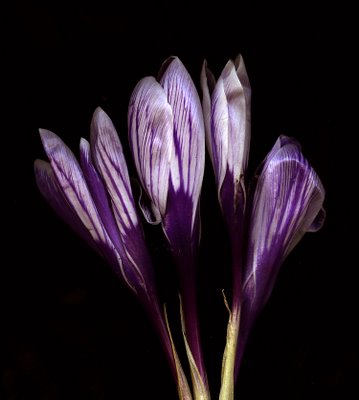A Lowly Crocus Cheers Me Up On A Windy Day
Tuesday, March 31, 2009

The name crocus comes from the Greek krokos (κρόκος), which like the Hebrew karkōm, Aramaic kurkama, Persian and Arabic kurkum means saffron or saffron yellow.
The genus Crocus is in the iris family (Iridaceae). They grow from corms and are mainly hardy perennials, and are found in a wide range of habitats, including woodland, scrub and meadows. There are about eighty species of crocus (of which approximately 30 are cultivated). Their cup-shaped, solitary, salverform flowers taper off into a narrow tube. The spice saffron is obtained from the stigmas of Crocus sativus, an autumn/fall-blooming species.
Pruning my dead or dying roses even on a bright sunny day is not a cheerful task particularly as it was windy and cold. Many of my plants do not look all that good. Perhaps it is too early in spring to make an opinion. There is a slim possibility that in a few weeks I might see some new growth from underneath the dead canes of my roses.

In the middle of my round rose bed I spotted the mauve crocuses. Rosemary swears at them in late spring. After they flower they send up mounds of green leaves that mess up the tidiness of the rose bed. She gets on her knees and cuts them off in late spring. Our crocuses are either volunteers or someone planted them before we came to the house. They are cheerful and give colour when nothing much is in colour. You have to separate the petals to look on the bright orange (saffron yellow?) stigmas. In their own way my crocuses made my day.






